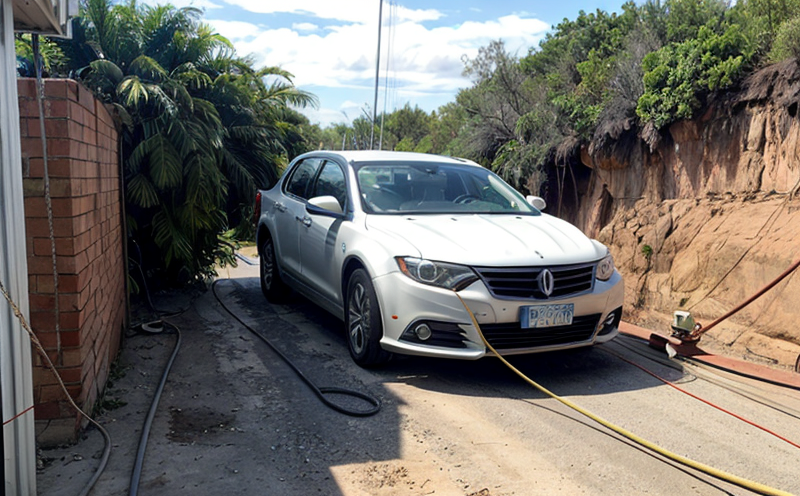Harness and lifeline inspection
In the realm of Environmental Health and Safety (EHS), harness and lifeline inspections are critical components in ensuring worker safety during high-risk activities. These inspections ensure that personal protective equipment (PPE) is not only fit for purpose but also meets the stringent standards set by international bodies such as OSHA, EN 362:2017, and ISO 45001.
Harnesses are designed to support individuals in dangerous working environments, including construction sites and utility towers. Lifelines provide a safety backup that can prevent accidents by catching the worker if they fall from their harness. The inspection process is meticulous, involving both visual checks and functional tests to ensure these pieces of equipment are reliable under various stress conditions.
The primary purpose of harness inspections includes checking for wear and tear, ensuring proper assembly, verifying that all components (e.g., D-rings, buckles) are functioning correctly, and confirming the integrity of the materials used. Lifelines, on the other hand, undergo tests to ensure they can withstand forces up to 50 kN without failure.
For harnesses, this involves a thorough visual inspection for signs of wear such as fraying or deterioration in material quality. Additionally, functional checks may include stress testing under simulated working conditions. Lifelines are subjected to dynamic and static load tests to ensure they meet the required breaking strength standards.
The importance of these inspections cannot be overstated. A single failure can lead to life-threatening accidents. In sectors where workers must perform tasks at heights, harnesses and lifelines play a vital role in preventing falls that could result in severe injuries or fatalities. The inspection process is not only about compliance but also about maintaining the highest standards of worker safety.
Compliance officers will find these inspections particularly important for ensuring regulatory requirements are met, while R&D engineers may focus on improving the design and functionality of these PPE items. Quality managers need to ensure consistent production processes that maintain product integrity and reliability over time. Procurement teams should also consider harness and lifeline inspections as part of their supplier audits to ensure they meet quality standards.
The inspection process is a multi-step affair, starting with a visual assessment by trained personnel. This step ensures immediate detection of any visible damage or wear that could compromise the integrity of the equipment. Following this, functional tests are conducted using calibrated test rigs that simulate real-world working conditions. The results of these tests provide crucial data that can inform decisions about the continued use of the equipment.
By adhering to stringent standards and performing rigorous inspections, businesses in sectors like construction, utility maintenance, and oil & gas can significantly reduce the risk of accidents on their sites. This proactive approach not only enhances worker safety but also contributes to a positive EHS culture within organizations. The investment in harness and lifeline inspections is therefore a sound business decision that aligns with broader corporate goals for sustainability and safety.
Benefits
The benefits of harness and lifeline inspection extend beyond mere compliance; they provide substantial value to organizations across various sectors. By conducting regular inspections, businesses can significantly reduce the risk of accidents that could lead to severe injuries or fatalities.
- Enhanced Worker Safety: Regular inspections ensure that PPE is in top condition and capable of providing the necessary protection during critical tasks.
- Compliance with Regulations: Ensuring adherence to international standards like EN 362:2017 and OSHA guidelines helps avoid potential legal issues and penalties.
- Improved Equipment Lifespan: Early detection of wear and tear allows for timely maintenance, extending the useful life of harnesses and lifelines.
- Cost Savings: Preventing accidents through proper equipment inspection can lead to significant cost savings in terms of medical expenses, insurance claims, and lost productivity.
Quality and Reliability Assurance
Ensuring the quality and reliability of harnesses and lifelines is paramount in maintaining high standards of worker safety. At our laboratory, we employ a comprehensive approach to quality assurance that encompasses both internal processes and external audits.
The first step in our quality control process involves rigorous training for inspection personnel. This ensures that they are equipped with the knowledge and skills necessary to perform thorough inspections. Following this, each harness or lifeline undergoes a series of functional tests using calibrated equipment. These tests simulate real-world conditions as closely as possible, providing accurate data on the performance of the equipment.
For harnesses, we conduct visual checks for signs of wear and tear, followed by stress testing to evaluate their structural integrity under various loads. Lifelines are subjected to dynamic load tests to ensure they can withstand forces up to 50 kN without failure. The results of these tests are meticulously recorded and analyzed to identify any potential issues that need addressing.
External audits conducted by independent third parties further enhance our commitment to quality and reliability. These audits provide an objective assessment of our inspection processes, ensuring they meet the highest standards of excellence. By incorporating both internal and external audits into our quality assurance framework, we are able to continuously improve our services and maintain the trust of our clients.





